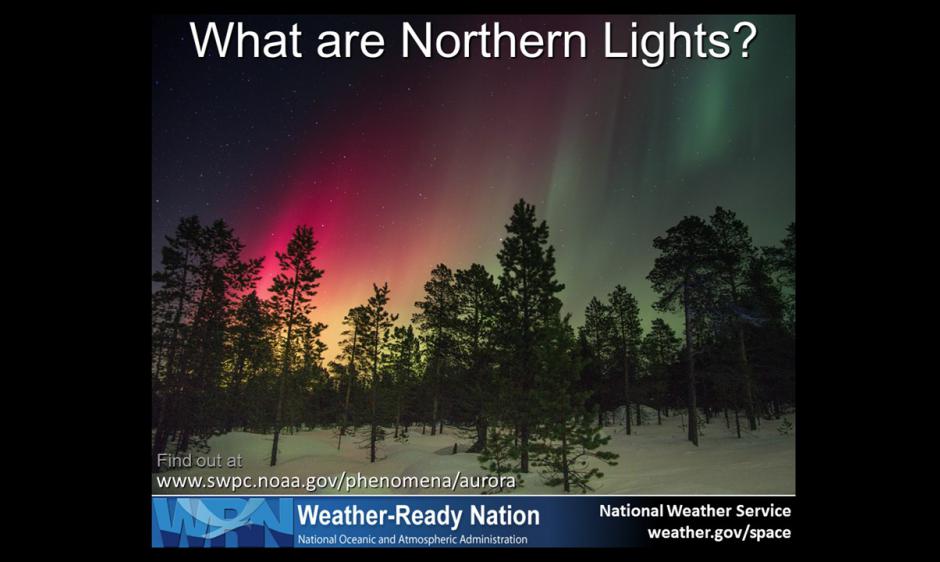
What Are Northern Lights?
The Aurora Borealis (Northern Lights) are the result of electrons colliding with Earth’s upper atmosphere. When space weather activity increases, the aurora may be visible. During large events, the aurora may be observed as far south as the U.S., Europe, and Asia. Keep in mind, to observe the aurora, the skies must be dark, clear, and free of clouds. To learn about the aurora http://www.swpc.noaa.gov/phenomena/aurora #SpaceWeather